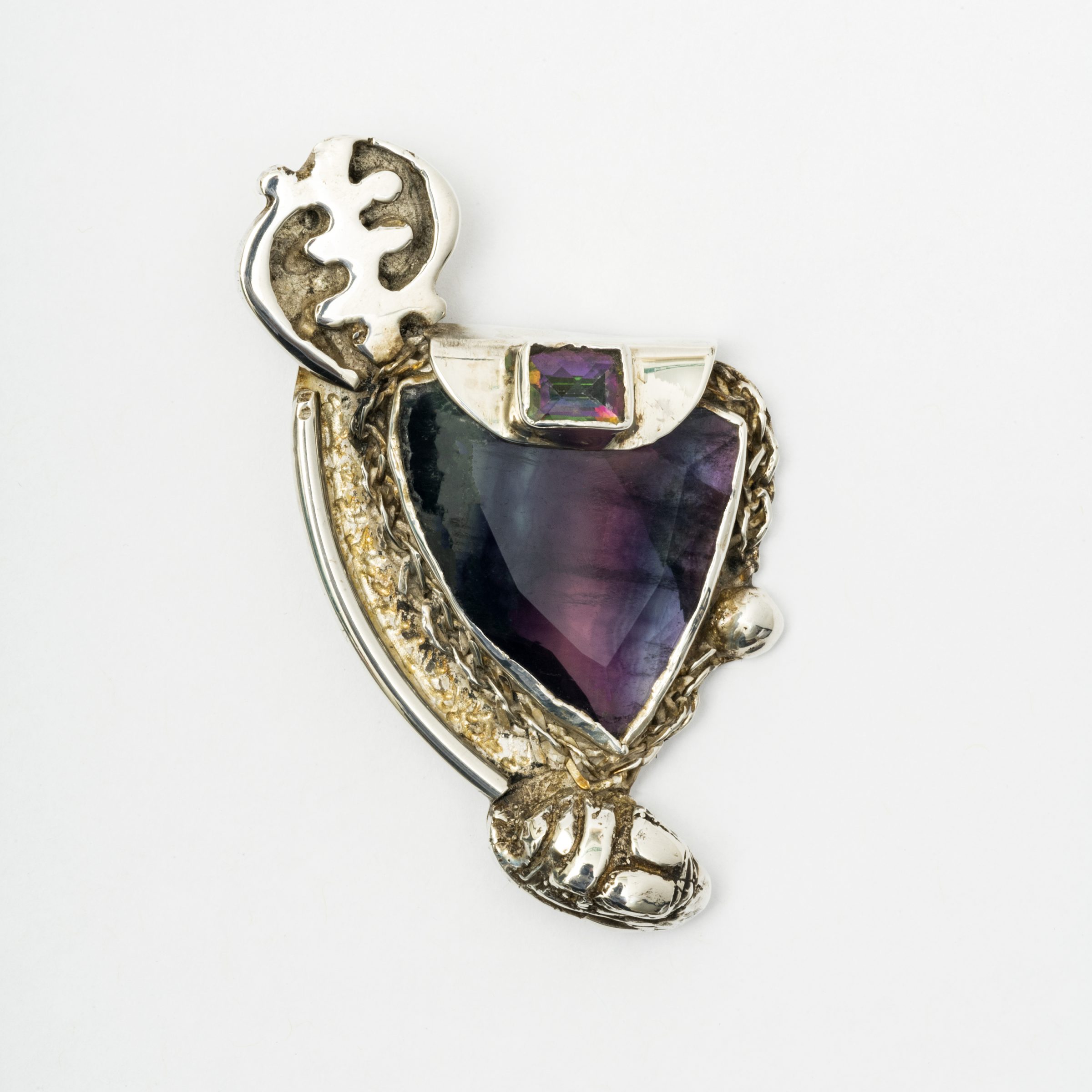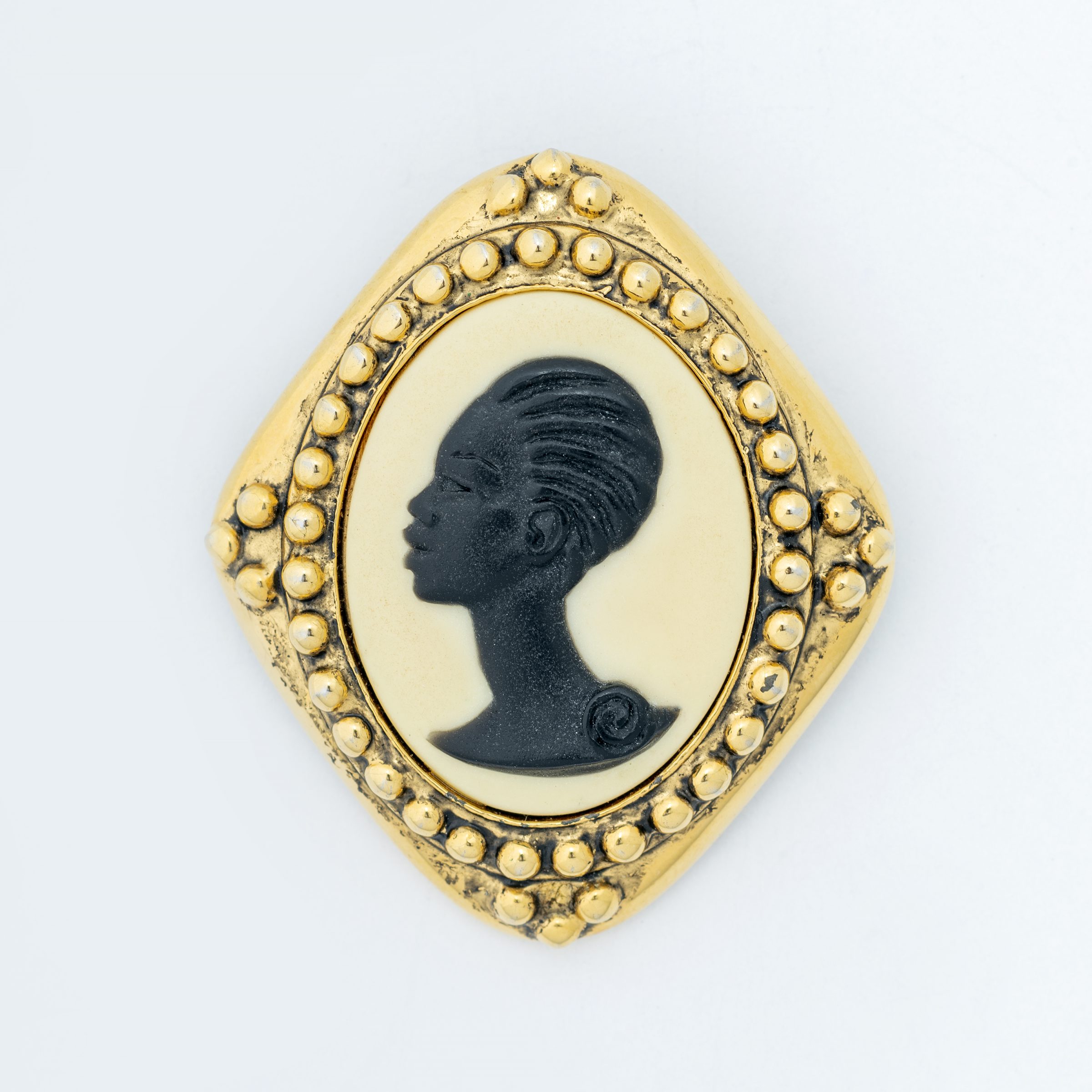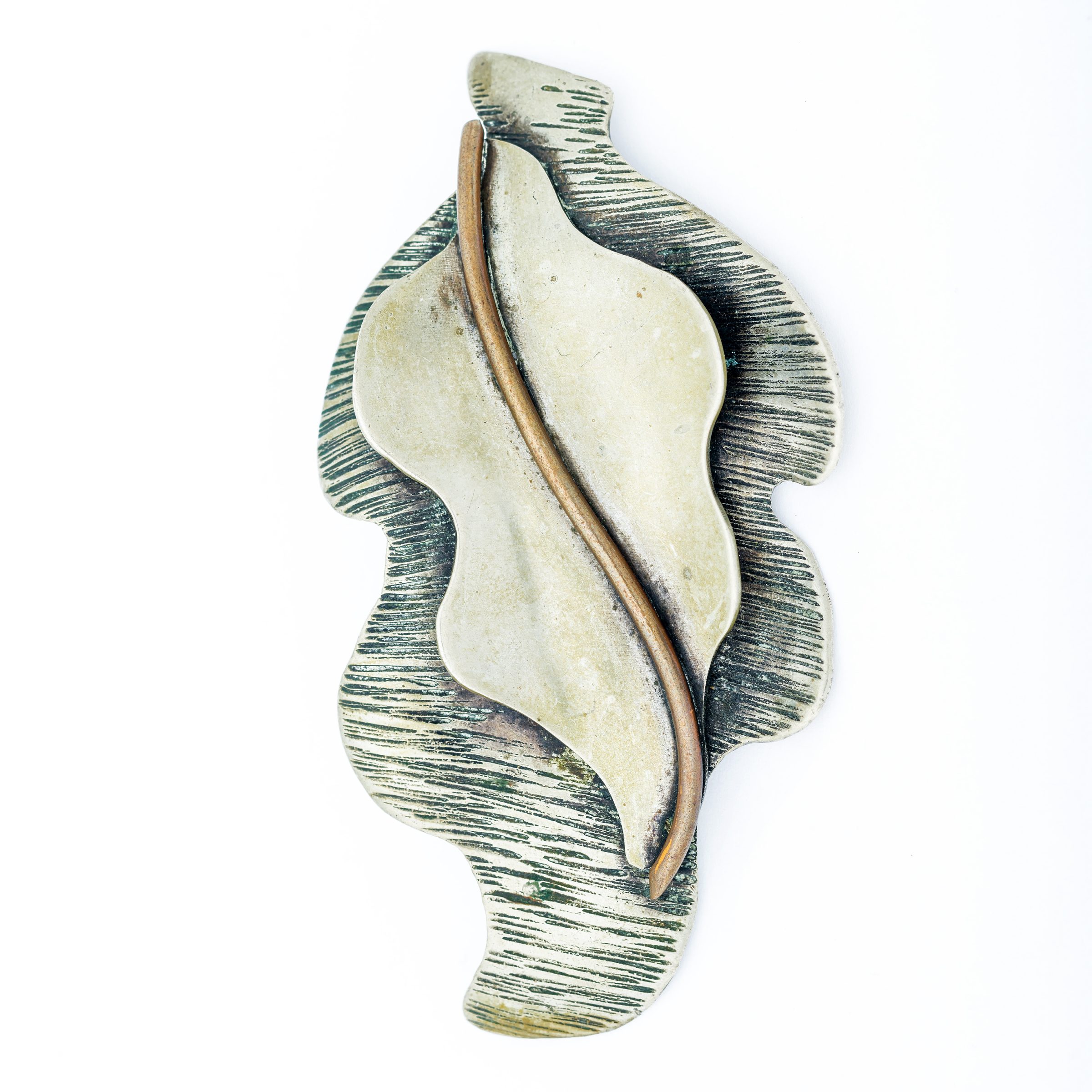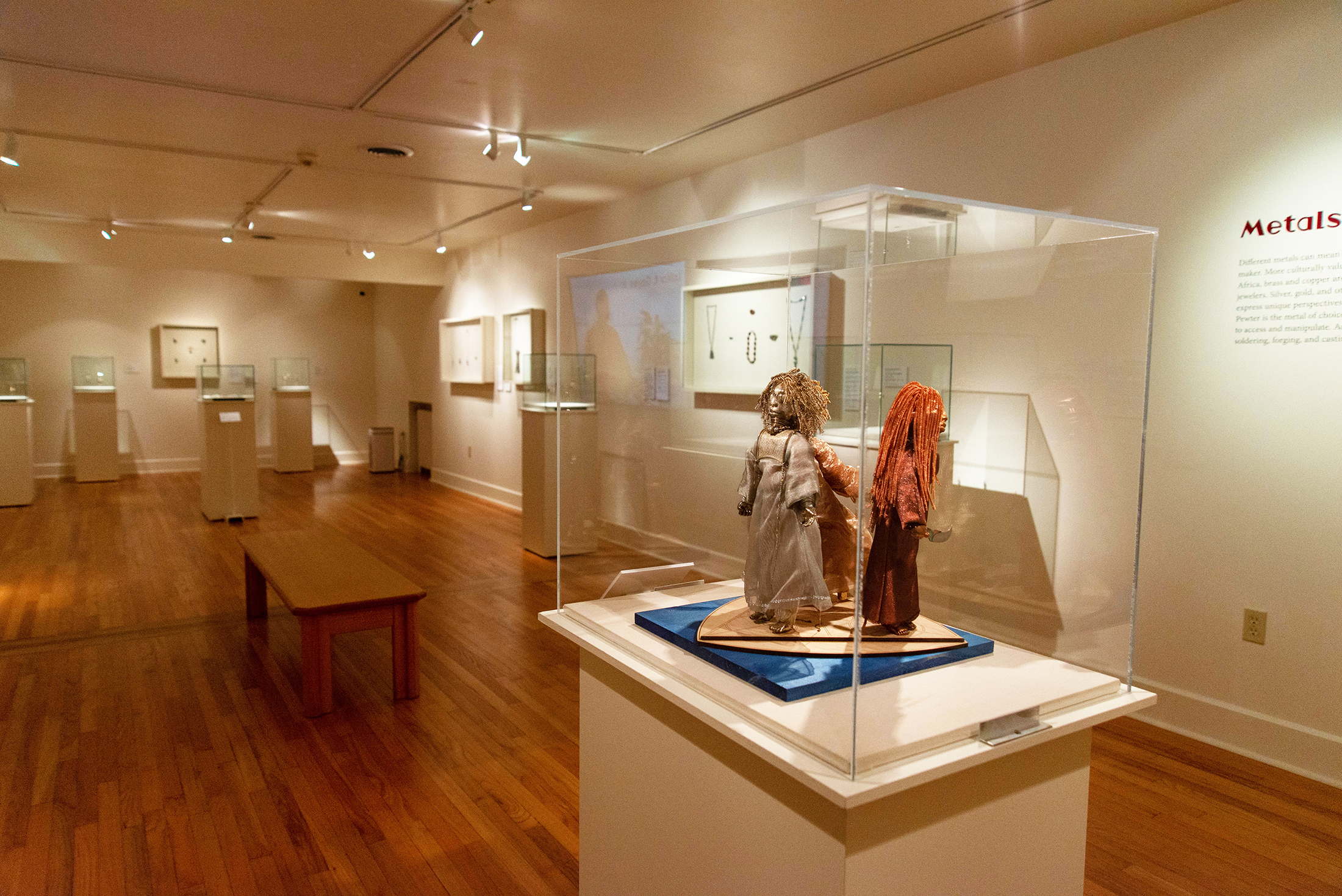Jewelry is about more than its aesthetic value or its monetary worth — it’s a form of expression, a form of empowerment; it carries an impact, a purpose. And “Divine Legacies in Black Jewelry,” one of the Metal Museum’s latest exhibits, captures that sentiment through its more than 80 jewelry pieces.
“‘Divine Legacies in Black Jewelry’ illustrates that Black identity is not a monolith but a collection of experiences,” says Brooke Garcia, collections and exhibitions manager. “This exhibition centers the works and lives of over 25 jewelry artists to explore the diverse histories of jewelry creation and production in the Black Diaspora of the Americas.”

The exhibition is an expansion upon Chicago-based curator LaMar R. Gayles Jr.’s “Conjuring Black Histories in Jewelry,” which Gayles curated as a student at St. Olaf in Northfield, Minnesota. At a young age, Gayles became enthralled with his great-grandmother’s collection of jewelry by Black artists. “She would explain to me different social, historical values and morals,” he says in an interview with the Metal Museum. “I see myself being represented in her collection; I see myself captured when she talks about her jewelry.”
So at 13, Gayles asked himself: Who was the first Black jeweler? From there, he fell into a rabbit hole where he found no simple answers in his research, so the search for answers continued into his college studies, where he faced a lack of documentation and scholarship. “I feel that oftentimes when we look at marginalized groups through art, it’s very anecdotal, … a throw-them-a-bone kind of thing,” he says. “[Black Diasporic jewelry] is not a homogenized institute entity; instead, it’s a pluralistic set of practices.”

“Divine Legacies,” in turn, serves as a catalyst for expanding the scholarship and the canon. More names and legacies are out there to uncover, Gayles says. To him, the word divine in the exhibition’s title adds “some level of mysticism to our legacy and history in this exhibition where it’s not just the history of Black jewelry,” he says, “it’s divining that history out.”
“This exhibition provides a lot of information about jewelers that aren’t documented otherwise,” Garcia adds. “We hope that visitors walk away from this exhibition understanding that these jewelers are not only expressing themselves and their identities, but they are also part of the broader history of American jewelry.”
The pieces range from the 1940s through the present day. “The pieces I’m most excited about are those by Winifred Mason-Chenet,” Garcia says. Known for using biomorphic, or nature-inspired, forms and Voodoo symbols, Mason-Chenet operated a transnational jewelry practice, likely the first African-American woman to do so.
Other artists include Arthur “Art” Smith, whom Mason-Chenet mentored and who is also often cited as the earliest practicing Black American jeweler; Russell Ferrell, who made his pieces out of found silver and spoons and forks in the ’80s and ’90s; Charnelle Holloway, the first Black woman to teach metalsmithing at a historically Black college; and Karen Joy, whose work is the most recent in the collection.

“The museum hasn’t featured a group exhibition of Black metalsmiths since 2015’s ‘A Kind of Confession,’” Garcia says, “and it felt like the appropriate time to both focus on this community of makers again and internally explore how the museum was prioritizing BIPOC artists and curators in our exhibitions program.”
Because of this collaboration with Gayles, the museum has received a Craft Research Fund grant from the Center for Craft to produce a catalog, which is still in production, and to film an interview with Gayles, which is now available on the museum’s YouTube channel.
“Divine Legacies in Black Jewelry” is on view at the Metal Museum until September 12th.

